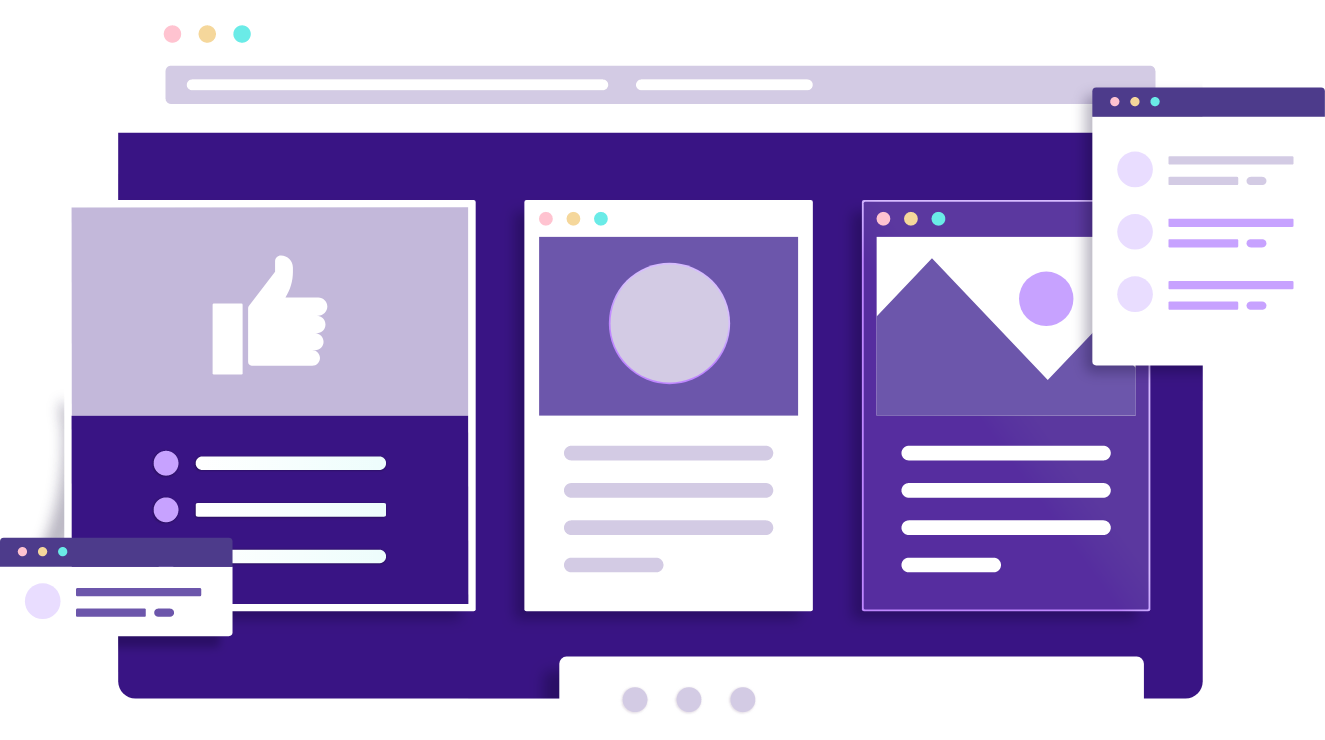Free Load Balancer Software for powering your Business Growth
Download our completely free enterprise-class load balancer today.
- See a 1 min video
- Enterprise Class – Layer 4 /7 Product
- Fast, Scalable & Reliable
- No Hidden Costs

We offer a very powerful, feature-rich and most
importantly, a very easy-to-use load balancer
Our Free Load Balancer is designed to give you a solution that simply works and can adapt to your evolving environment

Not just a load balancer
The traditional load balancer has evolved, and now it’s an ADC or Application Delivery Controller. It has much more functionality than just load balancing, such as SSL, caching, traffic management, etc.
Next Generation Product
The next-generation product, like the Edgenexus Free Load Balancer, is a full ADP Application Delivery Platform.
Expand Capabilities by Apps
If you wish to, you can expand its capabilities and add Apps, some FREE, most affordable, in much the same way you would add an app to your phone.
APP STORE
Get access to our
App Store
The Edgenexus App Store is dedicated to bringing you the latest application networking solutions and services, including SDN, NFV, Security, Containerisation, Big Data, and the IoT.
Check out some of the additional services you can add from the App Store. Simply choose a platform and download your add-ons, applications, and feature packs from the app store.

APPS
EdgeCert SSL Certificate Manager
Free/month
APPS
Cisco Duo Authentication Proxy
Free/month

APPS
Dell ECS Configuration Wizard
Free/month
FEATURES
So what do you get in the
free product?
Edgenexus is offering awesome features in the free version of its Load Balancer
| FREE LOAD BALANCER SOFTWARE | |
|---|---|
| Throughput | 100 Mbps |
| Load balancing | Layer 4 / Layer 7 |
| Services (VIPS) | 2 |
| Backend servers | 4 |
| Apps | 1 |
| Technical Support Available | No |
| Upgradeable | Yes |
| Clustering | No |
| Price | FREE |
APP STORE
Where is the catch-
What don't you get?
- Our outstanding and friendly support
- Automatic in-ADC software and firmware upgrades
- Flexible VIP and flexible options
- Ability to run multiple Apps
In addition, you can request and install trial licenses for additional features such as HTTPS, Advanced Server Health Checking, Layer 7, Caching, Acceleration, and flightPATH. We are sure you will love it, and once you do, you can move to a supported version.

WHY CHOOSE EDGENEXUS?
We're your Cloud
Load Balancing
ADC partner
We are a load balancing and application security company that are passionate about our products and our customers.
Our products ensure that your applications are delivered to end-users in a fast, secure, and resilient way so that you can worry less and deliver the right business outcomes.
The smallest startups use our technology with big ideas and small budgets, all the way to global enterprises and anything in between. We show them all the same level of love!

our technology relations
We Love Partnerships
Our technology relationships matter. We have the Accreditations, Partnerships and Validations, that you’d expect, with all the leading vendors. This provides assurance that our solutions are tested and integrated at source.

You’ll Be In Good Company
Our Customers
See what people are saying about our Edgenexus Load Balancer.
“We chose Edgenexus for its advanced functionality, cost effective pricing and superb pre-sales experience. The intuitive configuration and ‘dead-easy’ deployment were also significant factors in our purchasing decision.”
David Tanner
Senior Systems Analyst, MIC

Edgenexus Load Balancer Reviews
Overall
4.9/5
Ease of use
4.9/5
Customer Service
4.9/5
Value for Money
4.9/5
have anything to ask?
Frequently asked Questions
You may have several questions you want to ask us. We have tried to anticipate these and answered them below. If you still cannot find the answer you want, please email us at [email protected]
A load balancer is a network appliance responsible for the effective distribution of incoming network traffic across multiple backend servers in order to guarantee always-available application services. Load balancers can be deployed as software appliances, hardware appliances or even as a service. A load balancer allows you to optimise server utilisation and remove single points of failure in application delivery to guarantee the following:
Resilience – A load balancer allows you to run multiple application servers to fulfil the same role. In the event of a server failure, the load balancer will detect this and redirect traffic to the remaining online, healthy servers. This ensures high availability and reliability for applications.
Scalability – Load balancers allow you to seamlessly scale services without impacting performance. By simply adding more servers behind the load balancer for distribution, you introduce the ability to adapt to an increase in load.
Capacity – To increase capacity simply add more servers behind the load balancer. (Ok it’s not normally as easy as that because you’ll probably have databases and other app servers to consider, but you get the idea)
Load balancers distribute application traffic based on many different load balancing strategies or load balancing policies as they are sometimes called. To determine if a back-end server is online and healthy, a load balancer will use back-end server monitoring and Server health checking. The principles of load balancing have been around for many years, but load balancers have evolved significantly from the basic layer 4 device to much more sophisticated layer 7 Application Delivery Controllers, or ADCs, as Gartner refers to them. ADCs offer many additional key features, including security and traffic management.
A load balancing strategy or policy instructs the load balancer on where to send the next incoming request. There are many load balancing strategies available depending on the specific solution. However, a few common ones are listed below:
Round Robin: The most simple load balancing method where each server takes turns receiving a request.
Least Number of Connections: The load balancer will keep track of the number of connections a server currently has and send the next request to the server with the least connections. Note: Older, layer 4 only load balancers tend not to support this as they typically run DSR (Direct Server Return) and don’t know how many connections are currently on the back-end servers.
Weighted: Typically, servers are allocated a percentage capability as one server could be twice as powerful as another. Weighted methods are useful if the load balancer does not know the real and actual performance of the server.
Fastest Response Time: This load balancing method is normally only available on more advanced products, and the request will be sent to the fastest responding server.
Persistence is a feature that is required by many web applications and websites. Once a user has interacted with a particular server, all subsequent requests are sent to the same server, thus ‘persisting’ to that specific server. Session persistence ensures a continuity of service and a seamless end-user experience and is often a requirement of e-commerce applications whose session state is stored on the local webserver instead of a shared database. Persistence can come in many forms:
Load Balancer Cookie: The load balancer will set a cookie at the client and use this to identify the back-end server for this user.
Application Session Cookies: Many application servers already set their session ID, such as JSP or Asp.net session cookie. You can configure the load balancer to use these.
IP Based: Uses the Client IP address to persist. This method works for layer 4 and layer 7.
SSL Session: Uses the SSL session ID. This method is not very common as the session ID can change, and persistence could be lost.
RDP Session Cookie: Used for RDP connections.
we would love to hear from you
Don’t take our word for it.
Get our Free Load Balancer today.
Trusted by some of the world's top companies

UK: 0808 1645876 | USA: (866) 376-0175
App Store

Copyright © 2022 Edgenexus Limited.
